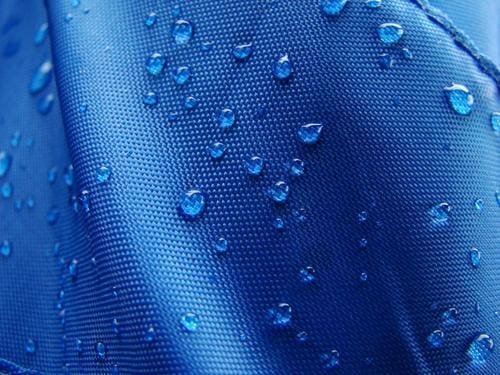Breathability refers to the ability of a fabric to absorb moisture and release it through the material itself, allowing it to ‘breathe’. Breathable Fabrics transmit body moisture away from the body, thus maximizing comfort and dryness during outdoor activities.
Breathability is an easy way of saying “moisture vapor transmission rate”. MVTR is the measure of how quickly (or how slowly) moisture passes through a fabric or other substance. It is usually measured in g/m²/day, or the mass of moisture that passes through a square meter of fabric in 24 hours. Moisture vapor transmission rate (MVTR), is also referred to as water
vapor transmission rate (WVTR). There are many industries where moisture control is critical. The apparel industry would be one of them. In regard to clothing, MVTR as a measure of breathability has contributed to greater comfort for wearers of clothing for outdoor activity.
Not surprinsgly, breathability is an oversimplification of MVTR: whereas MVTR measures a degree, breathability is used as an absolute. Specifically, if the MVTR of a fabric is greater than zero, the fabric can be described as “breathable,” even if realistically it is not. (There is no industry standard for breathability.) So, for example, even a body suit made of painter’s plastic could be described as “breathable” if the suit had a few needle-sized vents in it, because in theory moisture could pass through these vents.
To describe a fabric’s breathability, the task is left to adverbs like “extremely,” “very,” and “ultra,” which all seem susceptible to exaggeration by writers of product marketing copy.
The cotton knit t-shirt is breathable. If it was non-breathable – e.g. suppose it was made of latex – then it would trap wearers my perspiration. With time, the shirt would feel clammy, especially if I began exerting myself like by running 100-meter sprints between sentences.

A clammy shirt obviously would be uncomfortable, but the repercussions can be more significant on a backpacking trip. For example:
- If the wearers base layer clothing or rain gear is insufficiently breathable, the wearer will get wet from the inside due to trapped perspiration. Since water is significantly more thermally conductive than air, wet clothing can be significantly colder than dry clothing.
- If the outer shell of the wearers sleeping bag is insufficiently breathable, moisture will get trapped inside their sleeping bag, wetting the insulation. Even synthetic insulations – which are sometimes falsely described as being “warm when wet” – would be compromised in this scenario; the effect on goose down insulation would probably be more significant.
- If the wearers fully-enclosed shelter (e.g. a “tent”) is insufficiently breathable, moisture vapor resulting from respiration, perspiration, and drying equipment will likely cause condensation to collect on the shelter walls, potentially soaking them and their gear.
The one instance when breathability of fabrics may be undesirable is in extreme cold temperatures.
There are two ways that moisture can pass through a fabric:
- Ventilation. A porous fabric allows the direct passage of air through it – in other words, it vents – and this air maycarry moisture in the form of vapor. Fabrics with many and/or large pores (e.g. bug netting and base layer fabrics) breathe better than fabrics with few and/or small holes (e.g. eVent or Omni-Dry raingear fabric).
- Solid state diffusion. Somenon-porous fabrics permit the transmission of moisture. Latex, painter’s plastic, and Cuben Fiber will not, for example. But there are many varieties of “waterproof-breathable” fabrics (in fact, most, including the Gore-Tex family) that feature a membrane partly made of non-porous polyurethane. Polyurethane normally repels water (i.e. it is hydrophobic) but it can be chemically altered to absorb water (i.e. hydrophilic). Then, this type of fabric acts like a dish sponge: water vapor is absorbed out of the air; it moves through the sponge in a solid state towards the other side; and when it reaches the other side it can evaporate again.

